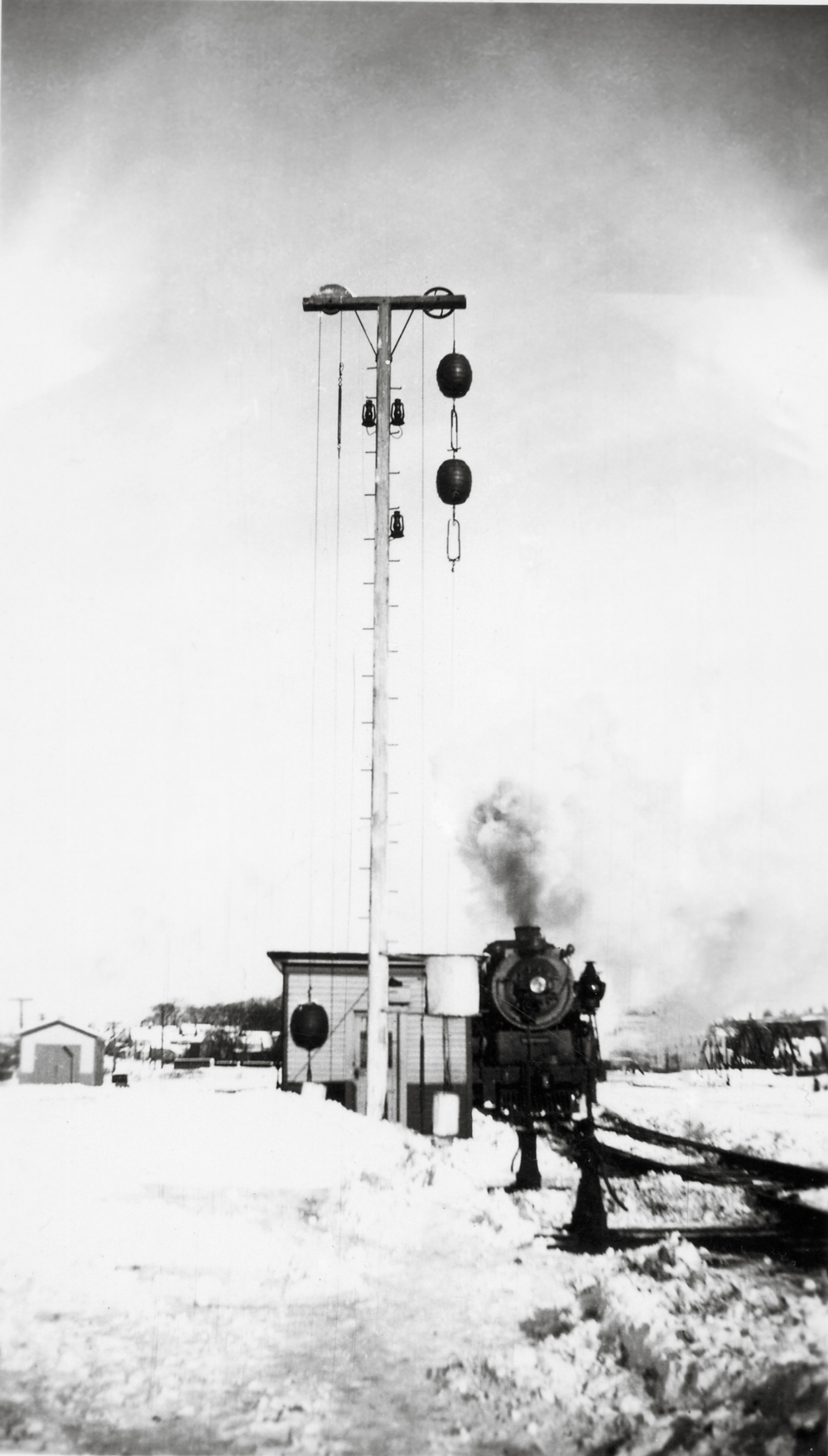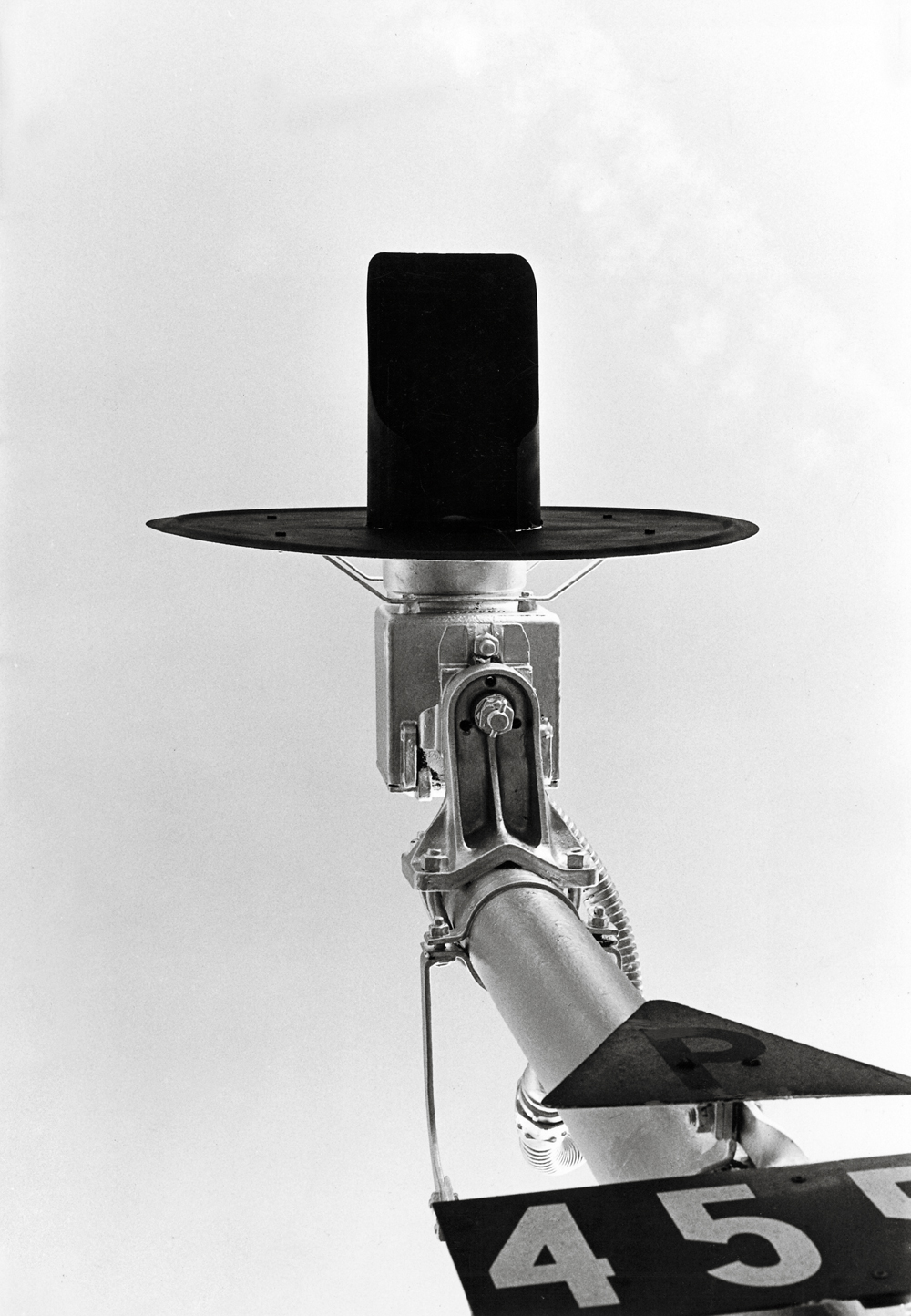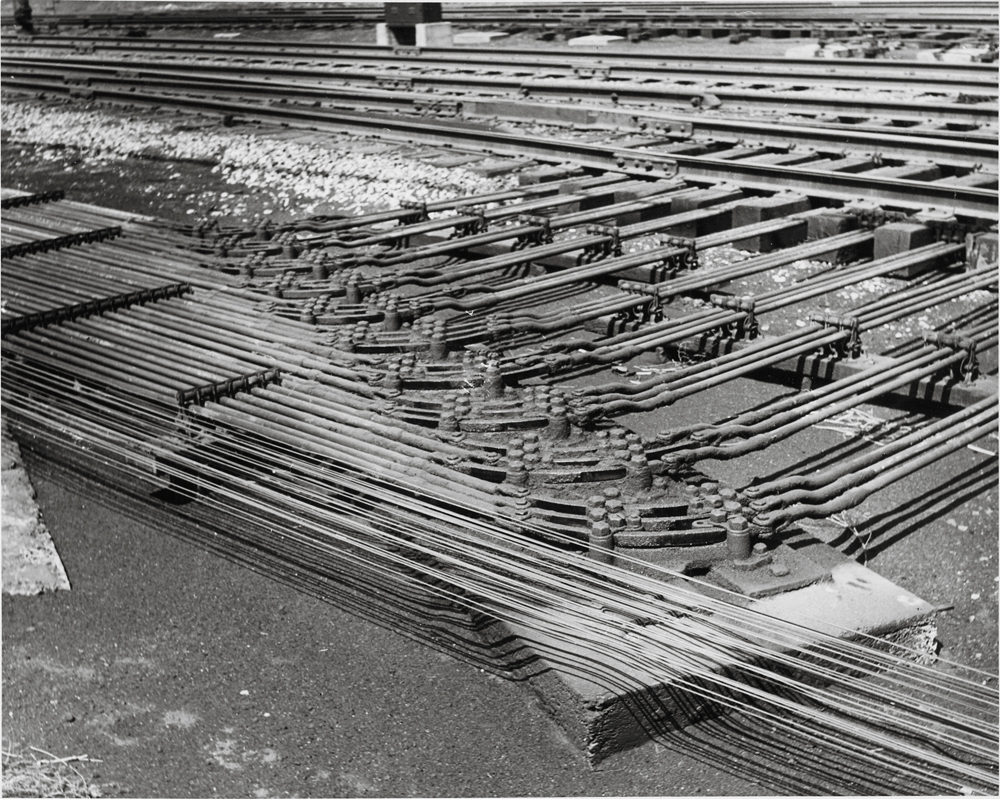Train signals


Britain led the way
Operating multiple trains on one line requires a definitive means of keeping them apart. The limits of railway infrastructure, combined with the boundaries of braking systems, demand clear and explicit methods of operation. Trains cannot readily stop within line of sight, but they also need to make the most economical use of track space. Therefore, trains must be able to follow one another in relatively close succession, and run in opposite directions over the same track without risk of collision. In railroading’s early days, trains themselves were the fastest mode of communication, so the only safe method to avoid collisions was rigid interpretation of the company’s timetable: a document integral with rules granting track authority.
Timetable operations worked, as long as trains ran on time and there was no need to operate extra or unscheduled trains. But as soon as operations deviated from the printed timetable, uncertainty as to the proper course increased risks of collision. The advent of the telegraph offered a significant improvement, for the first time allowing communication faster than transport. Initially applied to railways in Britain in the late 1830s, the telegraph was adopted by American railroads after 1850. Standard systems of rules evolved, allowing railroad officials to telegraph specific orders to amend timetables, thus providing for irregularities such as late-running trains and non-scheduled trains.
The ability to transmit orders from the main office by telegraph was the origin of centralized train dispatching. Orders were written in specific language and sent in Morse code to telegraph operators, who would copy the orders and relay them to train crews. (American railroads used timetable and train order rules until the 1980s, when the carriers switched to radio transmission of track occupancy authority.) This timetable and train order system offered adequate protection for lightly traveled lines, but as railroads became busier, more efficient means of separating trains were required.

Britain led the way for modern signaling by developing an efficient system of accommodating greater volumes of traffic with high degrees of safety. As early as 1834, the pioneering Liverpool & Manchester introduced manually operated fixed-signaling devices. Over the next few decades, British railways introduced systems of manual block protection and interlocking signaling for the regulation of traffic at junctions and terminals. Although America lagged in the development of sophisticated, fail-safe signaling, British interlocking and block-signaling systems greatly influenced American practices.
Key to British means of separating trains and preventing head-on collisions were well-defined sections of line called “blocks,” which typically extended between staffed stations. Block signaling evolved in conjunction with telegraphic communication. U.S. railroads used the telegraph for transmitting train orders, but in Britain the parallel development of the block instrument (first patented in 1852) enabled signalmen at each end of a block to communicate the condition of the line using succinct bell codes. Over the years, these codes developed a level of sophistication, describing the type of train traveling over the line, with special consideration for the type of braking used. By the 1880s, most British lines were equipped with manual blocks protected by manually operated semaphores, and controlled by signalmen adhering to strict rules of telegraphic communication.
Interlockings

At junctions, railways installed controlled signal systems designed to avoid collisions between trains traveling over intersecting routes. The first example of a centralized lever-controlled signal installation was on the London & Croydon Railway at Bricklayers Arms Junction in South London in 1843-1844. However, its original configuration had no absolute checks to prevent signalmen from lining conflicting routes. This led to a serious crash in the 1850s. The ultimate success of centralized signaling was the development of mechanical interlocking mechanisms to prevent signalmen from accidentally setting up conflicting moves.
The original invention, forming one of the fundamental innovations of mid-19th century signaling, was patented by John Saxby, who went into business with John Farmer. Although they soon had competition, Saxby & Farmer interlocking machines were used across Britain, and exported to many other countries, including the U.S. Interlocking principles resulted in a variety of mechanisms, designed not only to prevent conflicting movements but to prevent switch points from being realigned beneath a moving train.
Engineers later invented the means to ensure that once a route was lined it could not be changed or taken away from a train. Essential interlocking principles were advanced by combining them with track-circuit protection, electric relays, and — in the late 20th century — digital computers and solid-state logic circuits. (Indeed, many of the principles of digital computer logic were conceived by railway signal engineers.) These modern systems not only offer more complex solutions, but have increased the amount of work that can be allocated to an individual operator.
While the earliest example of interlocking signals in the U.S. has been credited to a Pennsylvania Railroad component company at Trenton, N.J., in 1870, America was slow to adopt interlocking signaling compared with Britain. By 1900, interlockings were standard American practice at junctions and passenger terminals. John Armstrong reported in a detailed article on signaling in the June and July 1957 Trains that by the mid-1950s, there were an estimated 4,200 interlockings in the U.S.
Today, interlockings range from protecting simple installations, such as a level crossing between two single-track lines, or the end of a signaled passing siding, to operations at the busiest and most complex junctions, such as a multi-track fan serving passenger terminals. Although the levels of complexity vary greatly for an individual interlocking, the technology employed and rules governing signal observance remain essentially the same.
Interlocking signaling enables a signal operator to remotely authorize train movements through a junction by lining and locking a route. Since the signals convey operating authority, they must be clearly distinguished from other lineside signals, such as block signals, which might show only track occupancy. Once a route is lined and locked, the basic interlocking equipment is designed to ensure no other movements will conflict.
Advanced systems also ensure that a route cannot be taken away from a train in any manner that would jeopardize its safe travel over the identified route. Historically, railroads used time locks to prevent changes to a route in the face of a train. To allow for greater flexibility without sacrificing safety, a further advancement allows for “approach locking,” using track circuits that go into effect only once a train has passed a distant signal entering the established route. A further refinement is sectional route locking, which for complex routing scenarios enables an operator to make changes once a train has completed a portion of its journey through an interlocking.
This excerpt on train signals and interlockings was first published in Trains Magazine. To read the full article, see “Signaling” in the November 2012 issue of Trains.
Check out “Railroad signals 101” for more on the basics and different types of signals.














Below what?